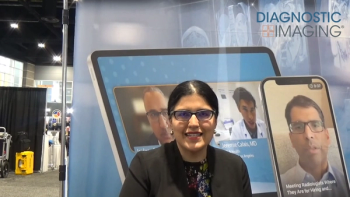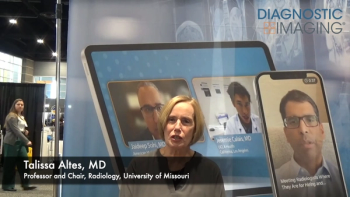Multivariable analysis from the National Mammography Database (NMD) reveals that personal history of breast cancer, dense breasts and mammography exams performed at academic facilities were associated with higher rates of false-negative (FN) assessments.
For the retrospective study, recently published in the American Journal of Roentgenology, researchers reviewed data from 38,304,525 mammography exams conducted between 2010 and 2022 for a total of 15,585,433 women (mean age of 58.8). The reviewed exams included 32,267,238 screening mammography exams and 6,037287 diagnostic mammography exams, according to the study.
The study authors noted a 4 percent FN rate for diagnostic mammography and a 1.9 FN rate for screening mammography exams. A personal history of breast cancer was associated with over a 3.6-fold higher likelihood of false-negative assessment, and a family history of breast cancer was 29 percent more likely to result in false-negative evaluation, according to the researchers.
In comparison to White women, the researchers found that Black women and women of mixed or other races had a 12 percent and 17 percent higher incidence, respectively, of FN diagnostic mammography assessments.
“These differences may relate to variations in access to supplemental breast cancer screening along with other potential contributing factors. … Patients from underserved populations may lack access not only to insurance coverage but also to a primary care physician; such lack of access could prevent patients from receiving age-appropriate breast cancer screening itself, from undergoing cancer risk assessments to determine if supplemental screening is indicated, or from brining a concerning breast symptom to a physician’s attention,” wrote lead study author Eniola T. Oluyemi, M.D., who is affiliated with the Russell H. Morgan Department of Radiology and Radiological Science at the Johns Hopkins University School of Medicine in Baltimore, and colleagues.
For diagnostic mammography exams, in comparison to women with almost entirely fatty breasts, the study authors noted a 33 percent lower incidence of FNs for those with scattered fibroglandular breast density. Women with heterogeneously dense breasts and those with extremely dense breasts had a 46 percent and 86 percent higher likelihood, respectively, of having FN assessments, according to the multivariable analysis.
Additionally, the researchers found that diagnostic mammography exams performed at academic or university facilities were associated with a 37 percent higher likelihood of FN findings in contrast to exams done at community hospitals.
Three Key Takeaways
- Higher false-negative risks with certain patient and exam factors. Personal history of breast cancer, higher breast density, and mammography exams performed at academic centers were independently associated with increased false-negative (FN) assessments.
- Racial disparities persist in diagnostic accuracy. Black women and women of mixed or other races experienced 12 percent and 17 percent higher FN diagnostic mammography rates, respectively, compared to White women, potentially reflecting disparities in access to supplemental screening and care.
- Dense breast tissue significantly impacts diagnostic performance. Women with heterogeneously dense and extremely dense breasts had 46 percent and 86 percent higher odds, respectively, of FN findings versus those with fatty breasts, underscoring the need for tailored supplemental imaging strategies.
In regard to the increased rate of FNs during the study period, the study authors noted a variety of contributing factors, including increased use of supplemental imaging.
“A possible driver of increasing FN rates could be the growing adoption of supplemental breast screening by breast MRI or ultrasound. MRI is the most sensitive imaging modality for breast cancer, and breast ultrasound has greater sensitivity than mammography for the detection of invasive lobular breast cancer, which is often mammographically occult,” added Oluyemi and colleagues.
(Editor’s note: For related content, see “Mammography Study Shows Elevated Future Breast Cancer Risk with Initial Concordance of Radiologist and AI Interpretation,” “New Study Examines Key Factors with False Negatives on AI Mammography Analysis” and “Emerging AI Mammography Model May Enhance Clarity for Initial BI-RADS 3 and 4 Classifications.”)
In regard to study limitations, the authors acknowledged a lack of mammography images in the National Mammography Database as well as insufficient data on supplemental screening, the mammography technology utilized, radiologist experience level, and use of artificial intelligence (AI) in mammogram interpretation.





























